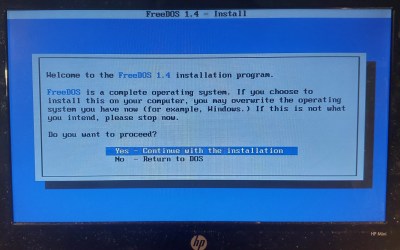We lost a true legend this week with the passing of NASA astronaut Jim Lovell at the ripe old age of 97. Lovell commanded the ill-fated Apollo 13 mission back in 1970, and along with crewmates Jack Swigert and Fred Haise — along with just about every person working at or for NASA — he managed to guide the mortally wounded Odyssey command module safely back home. While he’s rightly remembered for the heroics on 13, it was far from his first space rodeo. Lovell already had two Gemini missions under his belt before Apollo came along, including the grueling Gemini 7, where he and Frank Borman undertook the first long-duration space mission, proving that two men stuffed into a Volkswagen-sized cockpit could avoid killing each other for at least two weeks.
Slider4868 Articles
A Love Letter To Prototype Zero
An old friend of mine at my hackerspace introduced me to the concept of Prototype Zero: The Version that Even Your Own Sweet Mother Isn’t Allowed to See. The idea is that when you’re building something truly new, or even just new to you, your first take will almost always be ugly, and nothing will work the way it will by the time you make your second one. But it’s also important to the exercise that you see it all the way through to the end if you can.
I’m reminded of this after seeing a marvelous video by [Japhy Riddle] where he discusses his Prototype Zero of the Tape-Speed Keyboard. About halfway through the video he says that he would have done it totally differently if he knew then what he knows now: the hallmark of Prototype Zero. Yet he finishes it up, warts and all, documents it, and plays around with all of its possibilities. (Documenting it publicly isn’t part of the Prototype Zero method.)
I don’t think that [Japhy] is going to make a Prototype 1.0 out of this project, but I could be wrong; he seems to be content with having scratched the variable-speed tape itch. But if he did want to, he’s learned all of the gotchas on the engineering side, and found out exactly what such an instrument is capable of. And this loops back to the importance of getting Prototype Zero finished. You may have learned all of the tricks necessary to build the thing even before you’ve put the last screw in, but it’s when you actually have the thing in your hands to explore that you get the ideas for refinement that you simply can’t think up when it’s still just a concept.
Don’t be afraid to make your prototype quick and dirty, because if it ends up too dirty, you can just call it Prototype Zero. But don’t be tempted by the siren’s song of the 80% finished prototype either. Exploring putting Prototype Zero into use is its real purpose.
The 64-Degree Egg, And Other Delicious Variants
Many of us have boiled an egg at some point or another in our lives. The conventional technique is relatively straightforward—get the water boiling, drop the egg in, and leave it for a certain period of time based on the desired consistency. If you want the yolk soft, only leave it in for a few minutes, and if you want it hard, go longer.
Ultimately, though, this is a relatively crude system for controlling the consistency of the final product. If you instead study the makeup of the egg, and understand how it works, you can elicit far greater control over the texture and behavior of your egg with great culinary benefits.
Continue reading “The 64-Degree Egg, And Other Delicious Variants”
VRML And The Dream Of Bringing 3D To The World Wide Web
You don’t have to be a Snow Crash or Tron fan to be familiar with the 3D craze that characterized the rise of the Internet and the World Wide Web in particular. From phrases like ‘surfing the information highway’ to sectioning websites as if to represent 3D real-life equivalents or sorting them by virtual streets like Geocities did, there has always been a strong push to make the Internet a more three-dimensional experience.
This is perhaps not so strange considering that we humans are ourselves 3D beings used to interacting in a 3D world. Surely we could make this fancy new ‘Internet’ technology do something more futuristic than connect us to text-based BBSes and serve HTML pages with heavily dithered images?
Enter VRML, the Virtual Reality Modelling Language, whose 3D worlds would surely herald the arrival of a new Internet era. Though neither VRML nor its successor X3D became a hit, they did leave their marks and are arguably the reason why we have technologies like WebGL today.
Continue reading “VRML And The Dream Of Bringing 3D To The World Wide Web”
Jenny’s Daily Drivers: FreeDOS 1.4
When I was a student, I was a diehard Commodore Amiga user, having upgraded to an A500+ from my Sinclair Spectrum. The Amiga could do it all, it became my programming environment for electronic engineering course work, my audio workstation for student radio, my gaming hub, and much more.
One thing that was part of my course work it couldn’t do very well, which was be exactly like the PCs in my university’s lab. I feel old when I reflect that it’s 35 years ago, and remember sitting down in front of a Tulip PC-XT clone to compile my C code written on the Amiga. Eventually I cobbled together a 286 from cast-off parts, and entered the PC age. Alongside the Amiga it felt like a retrograde step, but mastering DOS 3.3 was arguably more useful to my career than AmigaDOS.
It’s DOS, But It’s Not MS-DOS

I don’t think I’ve used a pure DOS machine as anything but an occasional retrocomputing curio since some time in the late 1990s, because the Microsoft world long ago headed off into Windows country while I’ve been a Linux user for a very long time. But DOS hasn’t gone away even if Microsoft left it behind, because the FreeDOS project have created an entirely open-source replacement. It’s not MS-DOS, but it’s DOS. It does everything the way your old machine did, but in a lot of cases better and faster. Can I use it as one of my Daily Drivers here in the 2020s? There is only one way to find out.
With few exceptions, an important part of using an OS for this series is to run it on real hardware rather than an emulator. To that end I fished out my lowest-spec PC, a 2010 HP Mini 10 netbook that I hold onto for sentimental reasons. With a 1.6 GHz single core 32 bit Atom processor and a couple of gigabytes of memory it’s a very slow machine for modern desktop Linux, but given that FreeDOS can run on even the earliest PCs it’s a DOS powerhouse. To make it even more ridiculously overspecified I put a 2.5″ SSD in it, and downloaded the FreeDOS USB installer image. Continue reading “Jenny’s Daily Drivers: FreeDOS 1.4”
Australia’s Space Program Finally Gets Off The Pad, But Only Barely
Australia is known for great beaches, top-tier coffee, and a laidback approach to life that really doesn’t square with all the rules and regulations that exist Down Under. What it isn’t known for is being a spacefaring nation.
As it stands, a startup called Gilmour Space has been making great efforts to give Australia the orbital launch capability it’s never had. After numerous hurdles and delays, the company finally got their rocket off the launch pad. Unfortunately, it just didn’t get much farther than that.
Continue reading “Australia’s Space Program Finally Gets Off The Pad, But Only Barely”
Get Your Tickets For Supercon 2025 Now!
The wait is over — once this post hits the front page, ticket sales for the 2025 Hackaday Supercon will officially be live!
As is tradition, we’ve reserved 100 tickets priced at $148 (plus fees) for what we like to call the True-Believers. Those are the folks that are willing to sign up even without knowing who will be speaking or what this year’s badge looks like. Once those are sold out, the regular admission tickets will cost $296 (plus fees). We might be slightly biased, but even at full price, we like to think Supercon is a screaming deal.
Those who join us in Pasadena, California from October 31st through November 2nd can look forward to a weekend of talks, workshops, demos, and badge hacking. But what’s more, you’ll experience the unique sense of camaraderie that’s produced when you pack hundreds of hardware hackers into an alleyway and ply them with as much caffeine as they can handle. Some treat it like a normal hacker con, others as a social experiment, but nobody thinks of it as anything less than a fantastic time.
We’re still working closely with our friends at Supplyframe, DigiKey, and Framework to put together a full itinerary for Supercon 2025, so stay tuned over the coming weeks as things are finalized. But in the meantime, we’ve got a couple new additions this year that we’re pretty excited about.

















